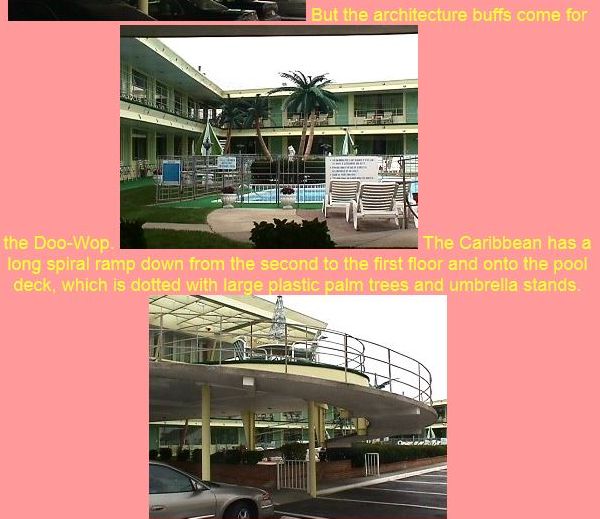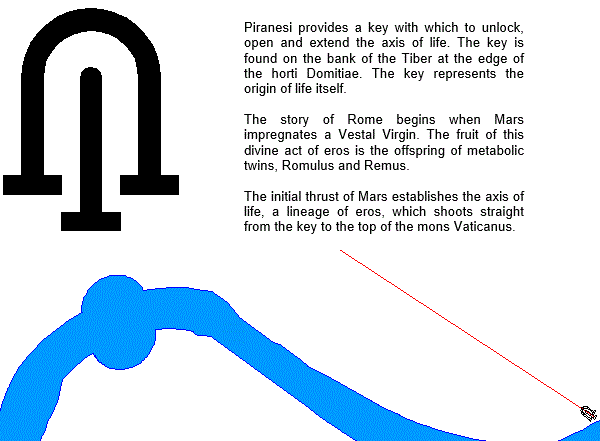working title museum | the architecture of being... virtual fog |
While I agree with Alex about there really being no 'perfect' shapes in actual existence, I nonetheless can't help but believe that the real 'inspiration' for the perfect circle comes from the pupils of our very own eyes. Who knows, it might even be the physical 'perfection' of our sight perception organ that somehow makes our brains/minds think ideals exist in the first place. Kind of like the medium being the message. In the early 1500s, while the old St. Peter's was being demolished and the new one was going up, Roman Catholics throughout Europe could buy Indulgences (maybe $10 got you 10 years indulgence), and the money was to fund the construction of the new Vatican basilica--and Luther "protested" against this, thus essentially initiating Lutheranism ("building another church") and Protestantism in general. After Learning from Las Vegas, Venturi and Scott Brown next published a group of essays under the title A View from the Campidoglio, and just a few years ago it dawned on me that when one is actually standing at the Campidoglio in Rome, the view being taken in is literally Rome's Campo Marzio. There aren't that many comparative scale analyses of architecture being done anymore. Personally, I see neither good or bad architectures as being a problem, rather it is the global nimiety of mediocre architecture that I wish were extinct. Yet there it was, an "Iron Curtain" physically dividing Europe, a very real structure on par with the Great Wall of China and equally worth being in architectural / built environment history books. I too am not interested in seeing the architecture of cyberspace merely being a reenactment of the real world. I know all this seems terrible indulgent (of me), but it all really boils down to (my) being extremely interested in design, particularly the design of patterns within events and even networks. The more I engage in all this, the more I realize that I too, like Piranesi and his Ichnographia Campi Martii, am designing a vast architecture of mnemonics, a House of Zeitgeist, you might say. My original intent was to call out just how artificial it is to consider something 'artificial' (like publicity/advertising) as likewise being something 'wrong.' On the local news (here in Philadelphia) last night, it was reported from the (I don't know the official name) Power Interconnect at Valley Forge, that yesterday, at 4:11 PM it was immediately noticed that a huge amount of power was being drawn from within the larger network towards the blackout area(s). The controllers at Valley Forge realized what was going on, and thus quickly 'disconnected' their facility from the area of the overall network that was then in the process of blacking out. If this 'disconnect' had not happened, the Philadelphia region would have also blacked out. I don't have to hope for web sites to be like television channels because once broad band becomes common, web sites will be capable of being exactly just like televeision channels, in fact more like television plus. Major blackouts are being reported in NE USA and Canada. I see my painting on the Gehry chair as a metabolic act because while I was being artistically creative I was at the same time being destructive. In January they asked me to send an abstract anyway, for they still wanted to publish my paper ("Mnemonically Delineating Veracity"), but I pulled out of that too because I sensed I was not being dealt with honesty. In any case, it appears The Complete Etchings is just a tad shy of being truly complete. St. Ambrose, in the late 300s, broke a silence and he succeeded in not being punished for it. Essentially, I take Eusebius' chapters 4 - 53 of book III of the Vitae Constantini as being in chronological order. After a couple of decades where whatever Manfredo Tafuri said bout Piranesi's Campo Marzio was unquestioningly further espoused by architectural academia, it seems rather odd that of late a whole new interpretation of Piranesi's Campo Marzio is now seen being espoused by architectural academia, yet nowhere is academia citing credit to the person/architect doing the most public research and writing on this new interpretation of Piranesi's Campo Marzio. Why is this credit not being properly given? Is it merely because the research is being conducted openly online and outside of academic control? I said, "You can tell that Lambert isn't used to being questioned. Ambrose died very early in the morning of Easter Eve, the 4th of April, A.D. 397, being about fifty-eight years old, and having governed the Church of Milan for twenty-three years and four months. I can still remember seeing the 'percussion' bomb being dropped by helicopter on live television. The whole book is written in the first person, with that person being the present dead Piranesi. This is exactly why I have made so much of my searches and researches public via design-l and other lists (as well as at Quondam), because whether or not I was wrong or right at the time, at least I was being completely open about what I was thinking and formulating. Subject: for the love of being published. I really like how Eusebius describes this occasion within "How Constantine entertained the Bishops on the occasion of his Vicennalia," chapter XV of Vita Constantini Book III at newadvent--I sense a pleasing hint of punch drunkenness, as in "talk about (finally!) being at an a-list party." With regard to skateboarders appropriating architectural space, it is interesting that this week there are the X-GAMES here in Philadelphia, and from what I can gather via TV news, all kinds of places in Philadelphia are being appropriated as venues for varied 'extreme' sport events. I fear that the whole notion of Lucian being Helena's favorite saint arose mainly because subsequent historians and writers of legends lost sight of Drepanum's/Helenopolis'/Yalova's exceptional thermal baths. The point being that either scenario is plausible depending almost only on individual point of view. Santa Croce in Gerusalemme, the seventh of the Seven Churches of Rome, houses what are Christianity's most valuable relics: a large piece of the Cross, at least one nail, some thrones, and half of the titiles, the sign that also hung on the Cross, which has a long Middle Ages history of being still in Rome but unknown and buried in a wall of Santa Croce, and is at least archealogically sound as to its date of origin. I don't know that there is any late antique reference to Constantine being at all connected with the (re)building of the Cathedral of Tyre. If Las Vegas is any indication, it hardly looks like the oasis is being abandoned. What really bothers me though is the notion that Kahn's architecture being inspired by his youthful surroundings is now seen as some new insight. Last night I dreamt the vacant house next door to me was being taken over by a fraternity. This leads to wondering if there are other "memory places" being created out there. (I think) Kiss My Abstract is right about Warhol's Shadows bearing a relationship to Franz Kline's work, moreover, a relationship that should have been noted since Shadows came into being. But if you insist on it, i.e., the new iMac, being good design, then you automatically also have to concur that today's iMac is the near future's trash. Given that radical (in this context) means marked by a considerable departure from the usual of traditional and tending or disposed to make extreme changes in existing views, habits, conditions, or institutions, hasn't radicalism and/or being radical become a contemporary art staple, indeed (a)commonplace? Regarding being "stuck on re-enactment and psychology" it should first be noted that the notion of reenactment (as I understand and utilize it) stems from philosophy of history, specifically the work of Collingwood (The Idea of History), which stems from the work of Croce and Vico. |
|
www.quondam.com/38/3812e.htm | Quondam © 2020.01.05 |





